#cote d'ivorie
Text
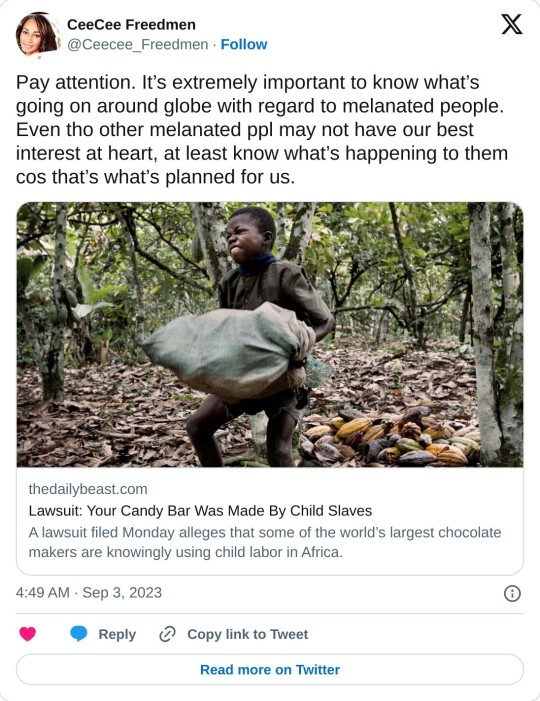
The Milton Hershey School in Pennsylvania is one of the wealthiest education centers in the world. Founded in 1909 as an orphanage for “male Caucasian” boys, it was awarded 30 percent of the company’s future earnings by Milton S. Hershey upon his death. Thanks to the success of Kit-Kats, Reese’s, and Whoppers, the school is worth a staggering $7.8 billion.
Now home to more than 2,000 students, it owns a controlling interest in the $22.3 billion Hershey company—a chocolate maker with roots in child protection and education that, in the worst form of irony, allegedly relies on cocoa harvested by child laborers in West Africa.
It is this irony that serves as the motivation behind a class action lawsuit filed Monday against Hershey and two of its competitors, Mars and Nestle. The complaints, filed by three California residents, allege that the companies are guilty of false advertising for failing to disclose the use of child slavery on their packaging. Without it, the plaintiffs claim, the companies are deceiving consumers into “unwittingly” supporting the child slave labor trade.
“America’s largest and most profitable food conglomerates should not tolerate child labor, much less child slave labor, anywhere in their supply chains,” the complaint reads. “These companies should not turn a blind eye to known human rights abuses... especially when the companies consistently and affirmatively represent that they act in a socially and ethically responsible manner.”
The class action suits seek both monetary damages for California residents who have purchased the chocolate and revised packaging that denotes child slaves were used. It’s a new approach to an old problem: the chocolate industry’s deep, dark, not-so-secret scandal. It’s been 15 years since the first allegations of child slavery in the chocolate industry caused national outrage. Will this be the final straw?
***
West Africa is home to two-thirds of the world’s cacao beans (cocoa), the main ingredient in chocolate—a product that’s fueled a $90 billion industry.
The first group to question the financial strategies behind the industry’s wealth was a British organization called True Vision Entertainment. In a shocking 2000 documentary titled Slavery: A Global Investigation, the group reported on the chocolate industry’s alleged connection to cocoa harvested by child slaves.The award-winning film opens on stick-thin adolescent boys in the Ivory Coast slinging hundred-pound bags of cocoa pods on their backs, followed by an interview in which the boys express their confusion over not being paid.
Later the filmmakers meet with 19 children who were said to have just been freed from slavery by the Ivorian authorities. Their guardian describes how they worked from dawn until dusk each day, only to be locked in a shed at night where they were given a tin cup in which to urinate. During the first six months (the “breaking-in period”), they say, they were routinely beaten. “The beatings were a part of my life,” says Aly Diabata, one of the former child laborers. “I had seen others who tried to escape. When they tried, they were severely beaten.”
The boys’ stories are sickeningly graphic. Before beatings, the boys say they were stripped naked and tied up. They were then pummeled with a variety of weapons, from fists and feet to belts and whips. In the film, some of the boys get up and imitate the beatings. Others stand to reveal hundreds of scars lining their backs and torsos—some still bloody and scabbed. They get quiet when the filmmakers ask whether any are beaten today and say some are simply “taken away.”
Asked what he’d say to the billions who eat chocolate worldwide (most of the boys have never tried it), one boy replies: “They enjoy something I suffered to make; I worked hard for them but saw no benefit. They are eating my flesh.” Toward the end of the segment, the filmmakers meet with one of the “slave masters,” who admits he purchased the young boys and that some of his men routinely beat them. His reasoning: He is paid a low price for the cocoa and thus needs to harvest as much of it as he possibly can.
The release of the film in late 2000 sparked national outrage. No one seemed more shocked than the chocolate companies themselves. In June 2001, Hershey senior vice president Robert M. Reese told Philadelphia Inquirer reporter Bob Fernandez that “no one, repeat, no one, had ever heard of this.” After internal investigations, several companies, including Hershey, expressed concern over the conditions of laborers in West Africa.
The news made its way to Congress, where U.S. Rep. Eliot Engel quickly drafted legislation asking the Federal Drug Administration to introduce “slave free” labeling. After gaining approval in the House of Representatives, the bill moved to a vote in the Senate, where it had the support needed to win passage. But just before the legislation made it to a vote, the chocolate industry stepped in with a promise it has yet to keep: to self-regulate and eradicate the practice by 2005.
The Engel-Harkin Protocol (or Cocoa Protocol), as the agreement was called, was signed in September 2001.
Eight companies—including Nestle, Mars, and Hershey—were signatories of the massive accord, pledging $2 million to investigate the labor practices and eliminate the “Worst Forms of Child Labor,” the official term from the International Labor Organization, by 2005. When the July 2005 deadline arrived with the industries yet to make major changes, an extension was granted until 2008.
When the next deadline came and went, a new proposal arose. By 2010, the companies basically started anew with a treaty called The Declaration of Joint Action to Support Implementation of the Harkin-Engel Protocol. This document pledges to reduce the worst forms of child labor by 70 percent across the cocoa sectors of Ghana and Ivory Coast by 2020.
In the 15 years since the documentary sparked outrage, there are more child laborers in the cocoa industry than ever before. The companies have not only failed to stop the “worst forms of child labor”; they’ve seemingly made it worse. A report released on July 30, 2015, from the Payson Center for International Development of Tulane University and sponsored by the U.S. Department of Labor found a 51 percent increase in the number of children working in the cocoa industry in 2013-14, compared to the last report in 2008-09. The number, they found, now totals 1.4 million. Those living in slave-like conditions increased 10 percent from the 2008-09 results, now totaling 1.1 million. The study concludes that while “some progress has been made,” the goal of reducing the number of children in the industry had “not come within reach.”
The California plaintiffs’ false-advertising claims against Nestle, Hershey, and Mars are the latest effort to pressure the chocolate industry to fix a problem it has known about for more than a decade. “Children that are sometimes not even 10 years old carry huge sacks that are so big that they cause them serious physical harm,” the complaint alleges. “Much of the world’s chocolate is quite literally brought to us by the back-breaking labor of child slaves.”
The complaint goes into detail about the lives of the estimated 4,000 children allegedly working in forced labor conditions harvesting cocoa in the Ivory Coast. Many of the children are sold into slavery, some for less than $30; others are kidnapped or tricked into thinking it’s a real job, the complaint alleges. Once there, the children are allegedly trapped on isolated farms, threatened with physical abuse, required to work when they are sick, and denied sufficient food.
While the plaintiffs mention each company’s individual pledges to tackle the problem of child labor, they consider these promises to be “false assurances” that have done little to solve the problem. As long as the companies allegedly continue to use child slaves, the plaintiffs say they believe consumers have the right to know.
In the eyes of Miki Mistrati, an award-winning documentary filmmaker who released a movie on the subject in 2014, Shady Chocolate, the lawsuit may help, but it won’t be the answer. “There is no doubt that a campaign about the reality in chocolate production will harm the chocolate companies,” Mistrati said. “Modern slavery with children is a part of the chocolate industry today. But I do not think that it can be the real game changer.”
Mistrati, who consulted with UNICEF and the U.S. Department of Labor, among others, for his movie, said he witnessed child slave labor firsthand—and believes it can be stopped quickly. “Mars, Hershey, and Nestle have had every opportunity to stop the trafficking of children and illegal child slaves,” he said. “I have seen small children, 6 years old, being trafficked from Mali to Ivory Coast. It was so heartbreaking to watch. But the companies have not had the will to end it for many years. Only empty words and expensive advertising instead of using money to pay back to the children on the ground in West Africa.”
Mistrati stressed the importance of Americans taking at least part of the blame. “Consumers have not been critical enough,” he said. “They have not asked why a chocolate bar only costs $1 when the cocoa comes from Africa. Customers have been too easy to trick with smart ads. It is over now. This trial is a unique opportunity for the world to see how their chocolate is produced and why it is so cheap.”
***
Nestle responded quickly to a request for comment on the allegations, calling the lawsuit “without merit” and claiming that “proactive and multi-stakeholder efforts” are necessary to eradicate child labor, not lawsuits. Of the three chocolate makers, Nestle appears to be taking the lead in fighting child labor. The company is the first cocoa purchaser to set up a system for tackling the problem, with concrete measures in place.
The company’s more than $100 million action plan involves building a child labor monitoring and remediation system to identify children at risk, enable farmers to run profitable farms, and improve the lives of cocoa farming communities. “Child labor has no place in our cocoa supply chain,” a spokesperson from Nestle told The Daily Beast. “We are taking action to progressively eliminate it by assessing individual cases and tackling the root causes.”
Mars representatives echoed Nestle’s sentiments on child slave labor, saying the company “shares the widely held view that child labor and trafficking is abhorrent and rooted in complex economic, political, and social issues.” In an official statement to The Daily Beast, the company said it was “committed to being part of the solution.”
At the moment, that solution seems vague. The company points to “Vision for Change,” an initiative it launched in 2012 that, according to its website, is meant to “achieve sustainable cocoa production” and “address farmer productivity and community issues.” Mars mentions that it has built 16 Cocoa Development Centers and 52 Cocoa Village Centers in the Ivory Coast, where farmers are taught how to manage their land and crops efficiently. How it specifically targets child labor is unclear.
Steve Berman, managing partner at Hagens Berman, the law firm representing the plaintiffs, confirmed that Nestle seems to have launched the most tangible program but said it has yet to yield results. “They claim they’ve been taking steps. They partner with the Fair Labor Association to investigate, and they claim they’re committed to eradicating it, but the fact is the recent reports show the number of children in the cocoa industry has increased,” Berman told The Daily Beast. “We doubt that Nestle is taking this very seriously.”
“The consumers reaching out to our firm have been outraged to learn that the candy they enjoy has a dark, bitter production cost—that child and slave labor have been a part of Nestle, Mars, and Hershey’s chocolate processing,” said Berman. “These companies fail to disclose their use of child and forced labor, tricking consumers into indirectly supporting the use of such labor.”
Berman added that he believes Mars, Nestle, and Hershey’s failure to eradicate child labor in the cocoa trade boils down to one thing: “cheap labor; dirt cheap.”
After interviewing Hershey about the 2000 documentary for the Philadelphia Inquirer, Fernandez decided to pursue a book on the company’s trust. That book, The Chocolate Trust, was released in June. In the final chapter, he remarks on the oddity of a company with roots in child welfare making its billions on the backs of child laborers.
But it’s the 15-year gap that most baffles Fernandez, who remembers being shocked by the initial revelations. The fact that alleged child slavery persists to this day seems almost too difficult to believe. “The thing is the industry said it would solve it in 2001; then they said they’d do it by 2005,” he told The Daily Beast, before asking the pivotal question: “What happened?"
Update: Hershey sent The Daily Beast the following comment:
At Hershey, we are committed to the ethical and responsible sourcing of all of our product ingredients and have no tolerance for illegal practices, including children used as forced labor in cocoa farming.The allegations in the lawsuit are not new and reflect long-term challenges in cocoa-growing countries that many stakeholders, including NGOs, companies in the cocoa supply chain and the U.S Government have been working diligently together to address for a number of years. Poverty is a fundamental issue in the cocoa-growing region of West Africa, and companies across the entire cocoa supply chain have been actively involved in substantial initiatives to improve the economic, social and labor conditions in these cocoa-growing communities.
Hershey is proud of the cocoa sustainability and farmer training programs we have established through NGOs and other partners in West Africa during the past few years. We have begun to see success from these programs. This includes programs in Cote d’Ivoire that are now beginning to take hold after years of political unrest that had hampered progress there until recently. From the work the industry has undertaken in recent years, it is clear that addressing the challenges will require an aligned and sustained focus from all stakeholders, including the cocoa industry, local governments, and NGOs and non-profit groups. That’s why CocoaAction, the industry response being led through the World Cocoa Foundation (WCF), is so important. These aligned efforts are aimed at accelerating sustainability and improving the livelihoods and social conditions of cocoa communities in Ghana and Cote d’Ivoire.
The cocoa industry, including Hershey, will invest more than $400 million in West Africa by 2020 to accelerate both the supply of certified cocoa and reduce instances of inappropriate labor by investing in better cocoa communities. These industry-wide efforts seek to reduce the occurrence of inappropriate farming practices that involve the use of children by reaching tens of thousands of farmers and their families in cocoa-growing areas, educating farmers about the risks and dangers of child labor, and training farmers and professionals to safely manage riskier tasks in which children have previously been involved. The combined and focused effort of the entire industry and other stakeholders is a very encouraging and positive development.
#child slavery#cocoa#hersheys#stop child slavery for candy#cocoa industry slavery#ghana#cote d'ivorie
13 notes
·
View notes
Text
An Assortment of thoughts on the future of a Plurinational America.
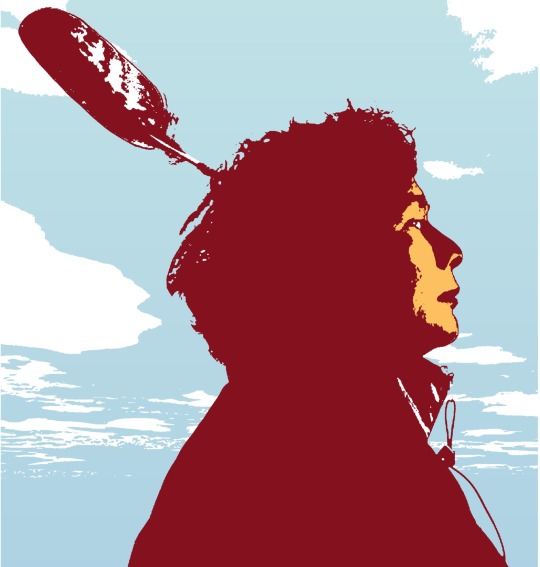
(Just a heads up, none of these will be fully formed thoughts and require relentless scrutiny before actual implementation, so please don't hold back any criticism)
Part 1: What's in a name?
America, North South or Central is a name that's been in use for around 400 years to refer to the western Hemisphere. Now of course, this name hasn't always been in place, the name itself comes from the 2nd Italian explorer who came to these fair lands Americo Vespucci (or so the tale goes), but before him many people lived and thrived on a land with many different names. In light of Nations across the sea changing the English name of their country to better reflect their own name for it (Turkey changing to Turkyie, Swaziland to Eswatini, the Ivory Coast to Cote D'Ivorie to name a few) I believe what we call America, more specifically the USA should change its name to better reflect both the (hopefully) Plurinational and Local societal change as well as to reflect upon the homeland of the Natives. The question arises though, what should its new name be? A term that comes up a lot is Turtle Island/Mikinoc Waajew, from the Lenape and Haudenosaunee stories of creation. But should we keep this term in its Native Mikinoc Waajew or in the translated Turtle Island? On this I am unsure.
#turtle island#us politics#politics#history#socialism#communalism#communist#communism#landback#native#native american#american indian#america#amerikkka#amerika
2 notes
·
View notes
Text

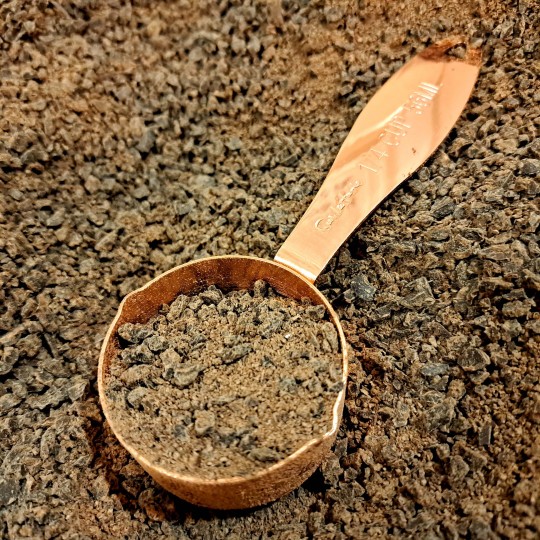





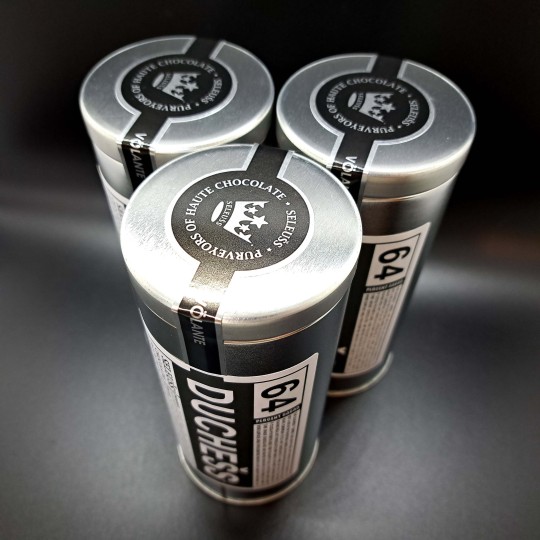
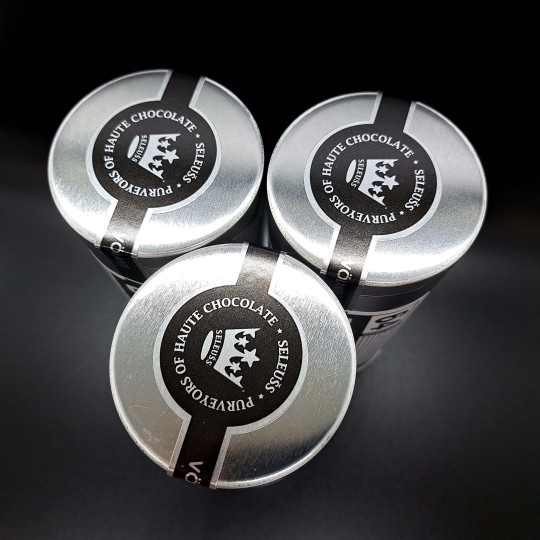
SELEUSS - DUCHESS HAUTE HOT CHOCOLATE
BATCH 1381: 64% COTE D'IVORIE GRATED HOT CHOCOLATE MIX
The DUCHESS™ SERIES: our line of real hot chocolate mix (technically, its not a mix in the traditional sense, as in cocoa power and sugar), so you can make European style hot chocolates at home, just like at our store. Making real Hot chocolate is very simple, you have to use real chocolate, If cocoa powder is used, then you have to call it, hot cocoa. Here, couverture grade chocolates are grated down into little pieces, so there is more surface area for easier melting into a hot liquid of your choice. [x37]
INGREDIENTS: chocolate (cacao butter, cacao mass, sugar, emulsifier (sunflower lecithin), vanilla). Traceable & sustainable from the ivory coast.
CONTAINS: This product is processed in a facility that contains milk, eggs, wheat, PISTACHIOS, almonds, peanuts, cashews and other nuts.
Container comes with moisture absorbing packs. Do no throw away, please keep them in the tin can to absorb moisture in between openings. Do not eat and keep away from children!
STORAGE: Please store CHOCOLATE TIN between 54-61°F (~12-16°C), in a dark and dry place, preferably in a wine cooler.
SELEUŠS® chocolates, 1910 1st ave, seattle, wa 98101 (LOCATED ABOVE PIKE PLACE MARKET IN DOWNTOWN SEATTLE, CORNER OF 1ST & STEWART).
WWW.SELEUSS.COM WWW.SELEUSSCHOCOLATES.COM [email protected]
Facebook.com/seleuss seleuss.tumblr.com instagram.com/seleuss @SELEUSS

This can contains 9+ oz of grated couverture grade haute chocolate mix, enough for making FOUR 6 oz cups of real hot chocolate, just like at our store. PREPARATION:
1) Scoop 2+ oz (~4 tablespoons) of grated chocolate mix into LARGE coffee cup.
2) Heat 4 to 5 oz of whole milk or substitute (coconut milk, oat milk) to ~165°F in either saucepan or milk frother.
3) Slowly pour heated liquid over grated chocolate and whisk until the chocolate is melted.
4) Serve at around ~145°F or desired temp. Top with whipped cream or BICERIN Di Giandujotto!
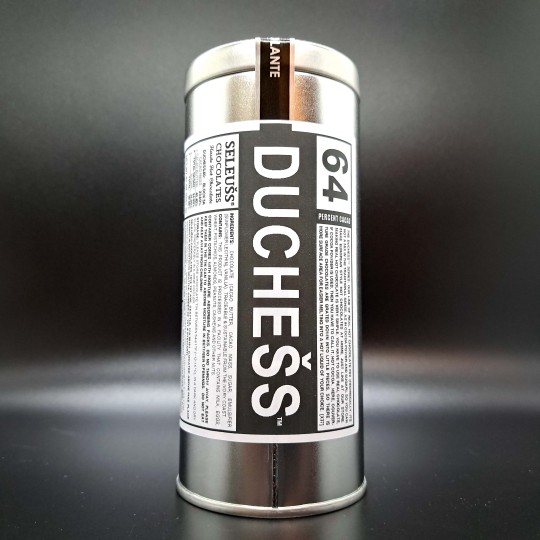


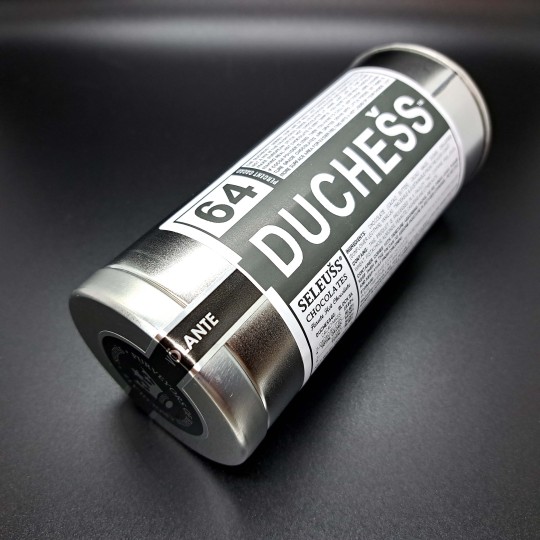


#seleuss#chocolates#hotchocolate#hot chocolate#real hot chocolate#haute chocolate#hautechocolate#seleuss hot choclate#seleuss haute chocolate#duchess#duchess hot chocolate#duchess haute chocolate#cote d'ivoire#cote d'ivoire chocolate#hot chocolate mix#seattle hot chocolate#seattle chocolatier#seleusschocolates#seattlechocolatiers#best hot chocolate#best chocolates in seattle#seattles best chocolates#seattlesbestchocolates#darkchocolate#duchess of seleuss#duchess of seattle
0 notes
Text
Biography of a Snickers Bar
The famous Snickers Bar is not only my favorite chocolate bar but is one of the best selling chocolate bar to ever be made. It is manufactured by Mars, Inc. in New Jersey, U.S.A., but the ingredients come from all around the Globe and the United States. The chocolate bars depends on other countries around the world for resources. The chocolate is made from cocoa beans that are grown on the cocoa tree. The cocoa pods are then removed from the tree by hand then the cocoa beans are shipped to factories to be made into snickers bars. Tools that are available on the cocoa farms range from( machetes, fermentation bins and so on). Also, child labor involved in creating a snickers bar. And article I came upon stated that "Some children in Cote d’Ivoire are forced to work in terrible conditions against their will, picking cocoa beans that make their way into Mars company sweets." A lot of workers who produce the cocoas for the company are not only dealing with low salary wages but the are also dealing with little to no health care. Cocoa farmers wages only about 6% profit from an average snickers bar. Cocoa and chocolate companies make roughly around 70% of profit from an average snickers bar. While retailers make 17% and Intermediaries makes the last 7%. This chocolate candy bar contains a large amount of fat, saturated fat and carbohydrates that comes from its ingredients. The chocolate coating of a snickers bar is milk chocolate made in with many other small ingredients. A handful of whole and halved peanuts are included in a snickers bar. A snickers bar contains a variety of sugar compounds which is to increase the sweetness of the treat. Some other ingredients in a snickers bar are used to compile the delicacy. From salt,lactose,butter,milk fat and egg white which they all contributes to giving the bar's rich flavor. The ingredients come from all around the globe. The sugar comes from Brazil, peanut from Argentina, corn syrup from Iowa, chocolate/cocoa comes from Guyana/ Cote d'ivorie, vanilla from Mexico, and the milk comes from Wisconsin. I purchased this chocolate bar from a local gas station. It costed $1.25 without tax. Snickers is the third highest-grossing candy bar. It came close to ranking number one in the world with $3.29 billion in global sales, falling short by only $90 million of the champion title in 2011. Its US sales amounted to $456.9 million in the last year.
https://www.shawconnect.ca/NewsArticle/Money/6442626213_182/The_5_most_profitable_candy_bars/story.aspx
http://freshly-grown.com/slave-chocolate-why-i-choose-fair-trade/
https://www.google.com/amp/s/qz.com/1308004/mars-candy-bar-labels-dont-have-to-disclose-the-bitter-truth-about-child-labor-a-us-court-rules/amp/
http://www.iupui.edu/~geni/documents/SNICKER_BAR_COME_FROM.doc
https://prezi.com/m/tqkbkc3rqlyl/snickers/
1 note
·
View note
Photo

Thanks for tagging @patricklandrydao ©️📸: @patricklandrydao #bnw_captures #bnw_greatshots #bnwphotography #bnwphoto #basketballcourts #basketball #playground #courtsoftheworld #cotedivoire #voyagerencotedivoire (en Cote D'ivorie) https://www.instagram.com/p/CaSOKA0K0on/?utm_medium=tumblr
#bnw_captures#bnw_greatshots#bnwphotography#bnwphoto#basketballcourts#basketball#playground#courtsoftheworld#cotedivoire#voyagerencotedivoire
0 notes
Text
"I just... I've heard... rumors, Detective."
"Oh?" she asked.
"About.... events. About your objectivity."
"Sir, I don't know that it's..." Santomas interrupted.
"I'd like to hear the Inspector's opinion," the Earl countered.
"I assume you're referring to my Father's...," Chatam started, sneering.
"Yes. Enlighten me how that makes you an impartial observer," the Earl said, his contempt obvious. "Tell me how you might embrace your objectivity, given your past. Given..."
"Sir, the detective has been nothing but..." the engineer started.
"You want to do this now, sir?" Chatham said, frustration evident in her voice. "That's fine. I've got all day. Because in the olden days, I could forgive the aristocracy their obliviousness. You had staff and accountants and "men" in your employ to cover your ass. But now there's programs and algorithms to shroud your transactions, to route them to shell companies off Cote D'Ivorie to inoculate you from the truth. And you think you're so clean, so isolated that no one, least of all The Government, will follow your transgressions. But we do, Sir. We do, to the maximum extent of our mandate. And no matter how many proxies you hide behind, some third-year on a scholarship is many steps ahead of you."
1 note
·
View note
Photo

< > Aeroclassics 1/400 diecast Air Cote d'Ivorie Airbus A320-214SL TU-TSV https://ift.tt/3b7okdq
0 notes
Text
Fatma Samoura encourages Meteors after losing to Ivory Coast on penalties
FIFA general secretary Fatma Samoura has sent a goodwill message to the Black Meteors following their defeat to the Young Elephants of Cote D'ivory in the CAF U23 Afcon.Ghana failed to reach the final of the 2019 Africa U23 Cup of Nations after losing to Ivory Coast in the semi-final on Tuesday.The Black Meteors lost 3-2 on penalties after the game finished 2-2.She encouraged the players putting everything they had in the game." to my 🇬🇭brothers #BlackStars. Tonight you gave the match everything you had. You have made your country & your people very proud with your skill & passion. Keep shining black Stars. Africa is proud of you."The defeat has delayed Ghana’s qualification to the Tokyo Olympic Games. The Black Meteors will have another opportunity to qualify for next year’s games when they take on the loser of semi-final clash between Egypt and South Africa in the third-place playoff.
source: https://footballghana.com/
0 notes
Text
Nigeria's D'Tigers Edge Past Cote d'Ivorie In FIBA World Cup 2019 Qualifiers
Nigeria’s D’Tigers Edge Past Cote d’Ivorie In FIBA World Cup 2019 Qualifiers
Nigeria’s men national basketball team the D’Tigers continued their impressive run at the ongoing FIBA World Cup 2019 Qualifiers with an 84 – 73 win against Cote d’Ivoire Friday night at the indoor sports hall of the national stadium Surulere, Lagos.
With this win, Nigeria remains unbeaten as they seek a place at next year’s FIBA 2019 World Cup in…
View On WordPress
0 notes
Text
Cote D'Ivorie Dairy Market 2011-2017 - Research and Markets
DUBLIN, May 29, 2017 /PRNewswire/ -- Research and Markets has announced the addition of the "Côte D'Ivorie Dairy 2017" report to their offering. Industrial applications of dairy products should be treated with caution when comparing data across categories. For example, care...
http://ift.tt/2rdMSue
0 notes
Video
youtube
MetropolisTV, a collective of young filmmakers and TV producers from Holland films cocoa farmers from Côte d'Ivoire tasting chocolate for the first time.
“To be honest I do not know what they make of my beans,” says farmer N’Da Alphonse. “They make good food from them, but I've never seen that. I do not know if it's true”
11 notes
·
View notes
Text
Elephant poaching to feature in World Cup match on Wildlife News
Elephant poaching to feature in World Cup match
Yaya Toure and his fellow team mates will be highlighting poaching at tonight’s World Cup qualifier. The World Cup 2014 qualifier between Cote d’Ivoire and Morocco kicking off shortly (if I have my time zones right) will be highlighting the plight of the elephant. Côte d’Ivoire ...
0 notes
Video
youtube
La coppa d'Africa, o anche quel fantastico torneo di calcio giocato mentre il resto del mondo è impegnato in altre cose più noiose. È una festa organizzata in orario d'ufficio in un giorno lavorativo. Dove succedono cose incredibili. Dove persino uno come Gervinho riesce a segnare in volo da posizione quasi impossibile.
#gervinho#african cup#cote d'ivorie#costa d'avorio#ivory coast#ACOF 2013#arsenal#calcio#soccer#togo#football#futbal
5 notes
·
View notes
Photo

Dan peoples
Cote d'Ivorie
Wood felt human hair cord iron pigment clay tukula
170 notes
·
View notes
Link
Two days ago I read a story about the UN and France attacking the Gbagbo Base Camp with helicopters. Today, the same news source running that story brings us a story of the side we supported over-running the other side's camp without any mention of that previous article or the attacks it talked about.
I don't know the first fucking thing about the politics of this war. It very well may be that Gbagbo is a total d-bag and that he should be considered a war criminal. But, if that's the case I find it hard to believe that enough people in that country would have stayed on his side long enough for the battle to continue for over 4 months.
I want to know what interests the West and the African Union has in having Ouattara in power and not Gbagbo. Why are the only stories about Cote D-Ivorie that we ever see are about the battle and not about the actual political reasons why it is happening?
Why isn't there video of Glenn Beck saying how and why we should destroy one side or the other because we have the right to protect our interests? Why isn't there any talk about what role the economy of the world and specifically of Cote D'Ivorie (they are the world's largest producer of cocoa) has to play in this? Why hasn't it been discussed that this country has only really been politically on its one for 17 years and this is the 3rd civil war in that time period? Why isn't anyone talking about the political stance of the native peoples vs. the large number of white, French Nationals in that country?
Why is everyone being so damn quiet about this when you can't go 5 fucking minutes without hearing something about Libya?
4 notes
·
View notes
Quote
The phrase "Remember the Congo" was once a rallying cry for Africans fighting to build a viable future for their continent. Remember the Ivory Coast could soon be invoked to recall a turning point.
Howard French
0 notes